
Ayurveda is more than a system of healing - it is a science and art of living that helps us to achieve health and longevity. It emphasizes on preventative and healing therapies along with various methods of purification and rejuvenation. Panchakarma is an integral part of Ayurveda which helps achieve a balanced state of body, mind and consciousness through detoxification and rejuvenation.

Panchakarma is a set of five therapies designed mainly for cleansing the body of toxins. Ayurveda considers that the purification of the body is important before the commencement of any other therapy. Just such as old dirty linen is washed and purified before new colour can be added, similarly the body needs to be purified before replenishing it with the new colours of health, youthfulness, vigour and vitality.
The process of Panchakarma generally starts with two sets of therapies: Oleation and Fomentation.
Oleation involves application of oil or oily substance on the body. Ayurveda offers a variety of oils prepared from various herbal and mineral ingredients mainly for external use. Apart from oils and ghee used particularly for internal application. The fatty substance acts as an effective medium, manages to reach the deeper tissues, helps in carrying the medicinal ingredients to every cell of the body and loosen up toxins stuck in the cells.
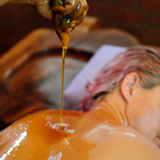
The therapies that generate sweat are called fomentation therapies. Oleation therapies are generally followed by fomentation therapies. The tissues made soft by oleation therapies become more flexible by subsequent fomentation. Deep-rooted toxins loosened by oleation liquefy due to fomentation and help it to flush out of the body.
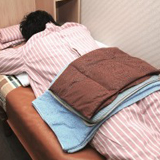
The principles of oleation and fomentation are applied through certain therapies. Some of these Ayurvedic therapies are:
This is a type of body massage done using an appropriate herbal or medicated oil. It may be done for the entire body or a specific part such as the head, feet or joint etc. Its main purpose is to lubricate the body parts and pacify vata dosha.
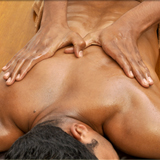
This is a specialized therapy aimed to relieve ailments related to the head region. In this therapy, a stream of warm oil is poured on the centre of the forehead through a vessel at a uniform speed. The temperature and speed of the oil stream are kept constant during the therapy that goes on for 30 to 60 minutes.
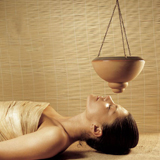
Pizhichil is an excellent therapy for relieving joint, muscular and neurological problems. In this therapy, the whole body is subjected to streams of lukewarm medicated oil with simultaneous soft massage with rhythmic hand movements. It helps to relieve pain, nourish the nerves and muscles, reduce stress, and induce peace of mind and relaxation.
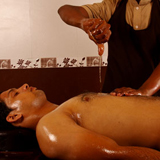
This massage is done with special bags which contain either medicinal herbs or other nutritious items. The bags are heated in warm oil for few minutes and then are used for massaging the body. It is a great massage to relieve pain, reduce physical and mental stress, and nourish and rejuvenate the body.
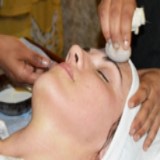
(medicine induced emesis): In this treatment, a patient is given internal and external oleation and fomentation therapies for few days. Once the toxins get liquefied and gather in upper cavities of body, the patient is given emetic medicine and decoction. This induces vomiting and helps to eliminate toxins from the body tissues. Vaman therapy is especially recommended primarily for kapha-dominated conditions such as obesity, asthma and hyperacidity.
(medicine induced purgation): In virechan, purgation or elimination of toxins occurs through the evacuation of the bowels. In this treatment as well, the patient is given internal and external oleation and fomentation therapies. After that, the patient is given a herbal laxative to facilitate evacuation of the bowels that helps in cleansing the body of toxins. Virechan therapy is recommended primarily for pitta-dominated conditions such as herpes zoster, jaundice, colitis, celiac disease etc.
(medicated enema): Administering medicated substances through enema is Ayurveda's unique contribution to the medical world. The therapy has enormous benefits, especially in complicated and chronic diseases. As per the nature of disease, herbal decoctions, oils, ghee or milk are administered into the rectum and this has incredible positive effects. This therapy is extremely effective against vata-dominated conditions such as arthritis, piles and constipation.
(nasal drops): This therapy is effective in clearing and cleansing the head region. At the beginning of the therapy, the head and shoulder regions are given a gentle massage and fomentation. Then, nasal drops are administered in both the nostrils. This brings about the cleaning of the entire head region and relieves various types of headache, migraine, hair problems, sleep disorders, neurological disorders, sinusitis, chronic rhinitis and respiratory diseases.
(Blood-letting): This therapy is good for cleaning of blood and effective against diseases caused due to impure blood. It can be done in a specific area or for the entire body. This therapy is particularly useful in various skin diseases such as psoriasis, eczema, and also in local lesions such as abscesses and pigmentation.
© 2020 AayuCare. All rights reserved